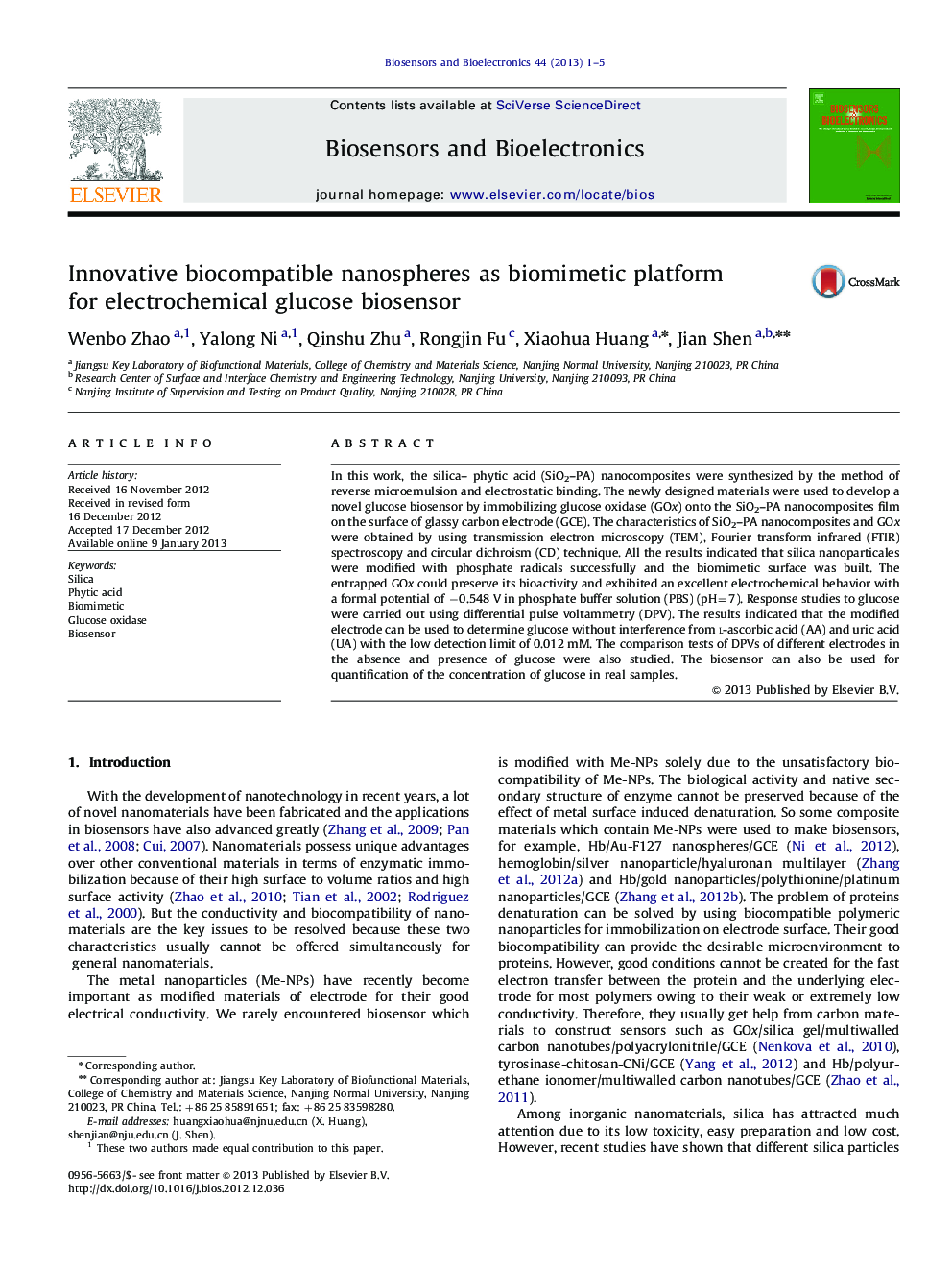| Article ID | Journal | Published Year | Pages | File Type |
|---|---|---|---|---|
| 866889 | Biosensors and Bioelectronics | 2013 | 5 Pages |
In this work, the silica– phytic acid (SiO2–PA) nanocomposites were synthesized by the method of reverse microemulsion and electrostatic binding. The newly designed materials were used to develop a novel glucose biosensor by immobilizing glucose oxidase (GOx) onto the SiO2–PA nanocomposites film on the surface of glassy carbon electrode (GCE). The characteristics of SiO2–PA nanocomposites and GOx were obtained by using transmission electron microscopy (TEM), Fourier transform infrared (FTIR) spectroscopy and circular dichroism (CD) technique. All the results indicated that silica nanoparticales were modified with phosphate radicals successfully and the biomimetic surface was built. The entrapped GOx could preserve its bioactivity and exhibited an excellent electrochemical behavior with a formal potential of −0.548 V in phosphate buffer solution (PBS) (pH=7). Response studies to glucose were carried out using differential pulse voltammetry (DPV). The results indicated that the modified electrode can be used to determine glucose without interference from l-ascorbic acid (AA) and uric acid (UA) with the low detection limit of 0.012 mM. The comparison tests of DPVs of different electrodes in the absence and presence of glucose were also studied. The biosensor can also be used for quantification of the concentration of glucose in real samples.
► Innovative SiO2–PA NPs were prepared by reverse microemulsion and electrostatic binding method. ► Biomimetic surface provided by SiO2–PA NPs could preserve bioactivity of GOx. ► The GOx biosensor modified by SiO2–PA NPs exhibited an excellent electrochemical behavior.
